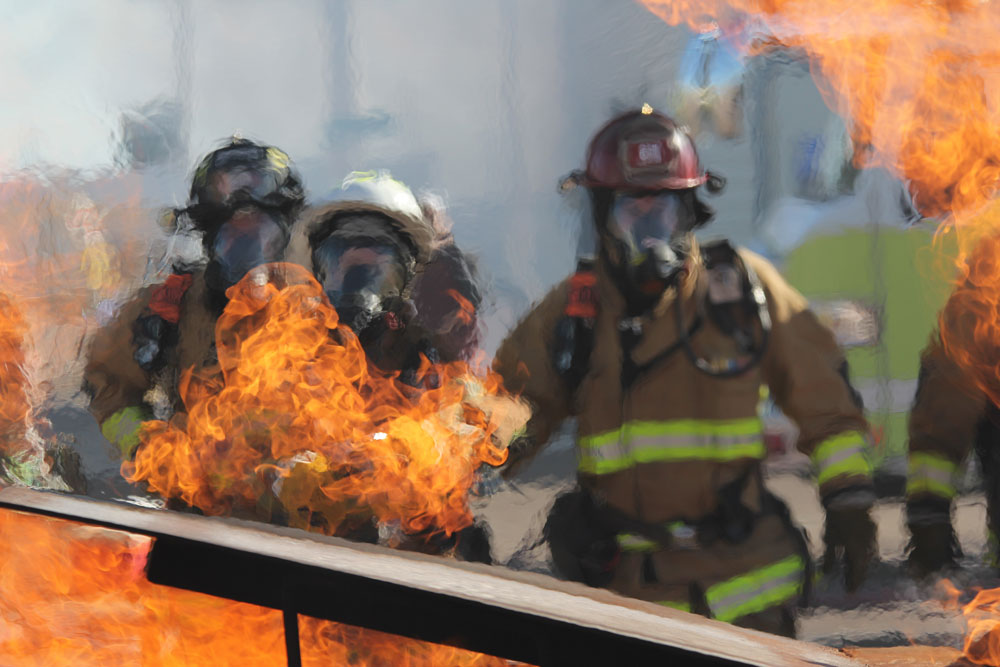The stringent regulations to install fire protection systems are notably driving the market growth, although the high cost of purchase and maintenance of fire protection systems may impede the market growth. Our researchers analyzed the data with 2022 as the reference year, as well as the main factors, trends and challenges. A holistic factor analysis will help businesses refine their marketing strategies to obtain a competitive advantage.
Key Driver
In particular, strict regulations for the installation of fire protection systems are driving the growth of the market for fire protection systems in India. The implementation of stringent fire protection regulations in India has resulted in the adoption of fire protection systems. The Government of India is working to reduce the impact of fires. As a result, governments have made fire safety systems mandatory in the residential, commercial and industrial sectors. Regulations require that vessels be equipped with appropriate emergency response systems, especially fire protection systems. Governments across the Asia-Pacific region are also adopting model building codes that require sprinkler systems to be installed in new homes.
According to the National Building Code of India, all buildings must be protected by sprinkler systems, fire extinguishers, high or medium speed watering, foam and wet risers, depending on occupation. The installation of a fire extinguishing system is one of the most effective means of reducing loss of life and property. As such, Indian government agencies, manufacturers of fire protection systems, and developers of commercial and residential buildings encourage the use of fire protection systems. It stimulates the growth of the Indian market for fire protection systems.
Significant Trends
Major technological advances in fire protection systems are a key trend influencing the growth of the Indian fire protection system market. The market notes an increase in supplier expenditure on R&D activities. The marketplace provides many innovative applications and solutions. Rapidly evolving technology and consumer preferences are forcing suppliers to provide innovative and highly effective fire protection systems to survive commercialization in the marketplace. In addition, the significant development of smoke detectors, big data and its technologies have brought the concept of intelligent smoke detectors. This leads to a significant growth of smoke alarms on the market for fire protection systems. The intelligent smoke detector is programmable and connects to WiFi networks in commercial spaces and homes. In this way, they provide smoke detectors and easy monitoring via mobile devices. These detectors make it easy to monitor fire emergencies. As a result, significant technological advances in fire protection systems are expected to spur growth in the Indian market for fire protection systems over the forecast period.
At the same time, there is a growing demand for automatic fire detection and suppression systems to detect fires quickly and effectively, reducing the risk of property damage and loss of life. Early detection of fires is achieved through the use of automated systems that enable rapid response to prevent the spread of fires. To improve safety and efficiency, automatic fire-extinguishing systems can put out fires without assistance from firefighters. This trend is accelerating due to increasing safety concerns and an increase in fire incidents in India, resulting in stricter fire safety laws in the country. The demand for automatic fire protection systems in India is also driven by the introduction of advanced technologies and the increasing use of building automation systems. Suppliers in the Indian market for fire protection systems are investing in research and development to create innovative, state-of-the-art and effective systems that can adapt to changing consumer demands.
Major Challenge
The high cost of purchasing and maintaining fire protection systems defies the growth of the Indian market in fire protection systems. Fire protection systems are costly. As a result, many small and medium-sized businesses (SMEs) do not like having these systems in their workplace. They are more likely to choose portable fire suppression systems such as fire extinguishers and manual systems that are available at a lower cost than automated systems. These systems have significant revenues associated with installation, maintenance and support. For startup companies and residents, it has become difficult to own and maintain a fire protection system. These systems need good installation planning and are costly. The after sales service consumers need for proper use of these systems includes an inventory of equipment and spare parts. However, such cumbersome procedures prevent consumers from installing these systems on-site.
In addition to acquisition and installation costs, the costs associated with the modernization and modernization of fire protection systems are also significant, which influences the deployment of these systems. Increased safety awareness and regulation of commercial and industrial fire safety standards have resulted in improvements to existing fire protection systems or installations. When retrofitting tall buildings, fire alarms and fire suppression systems are connected to the pipeline system. Building improvements are designed to offer maximum protection with minimal impact on hours of work, tenants or employees. This increases the cost of upgrading and replacing fire safety systems. Consequently, the problems associated with the renovation of existing buildings hamper the growth of the Indian market in fire protection systems.
Key Customer Landscape
The report covers the lifecycle of market adoption from innovator to late adopter. It focuses on adoption rates for different regions depending on penetration. In addition, the report also includes key sourcing criteria and price sensitivity factors to help companies evaluate and develop their growth strategies.
Reference: https://www.technavio.com/report/fire-protection-systems-market-industry-in-india-analysis


